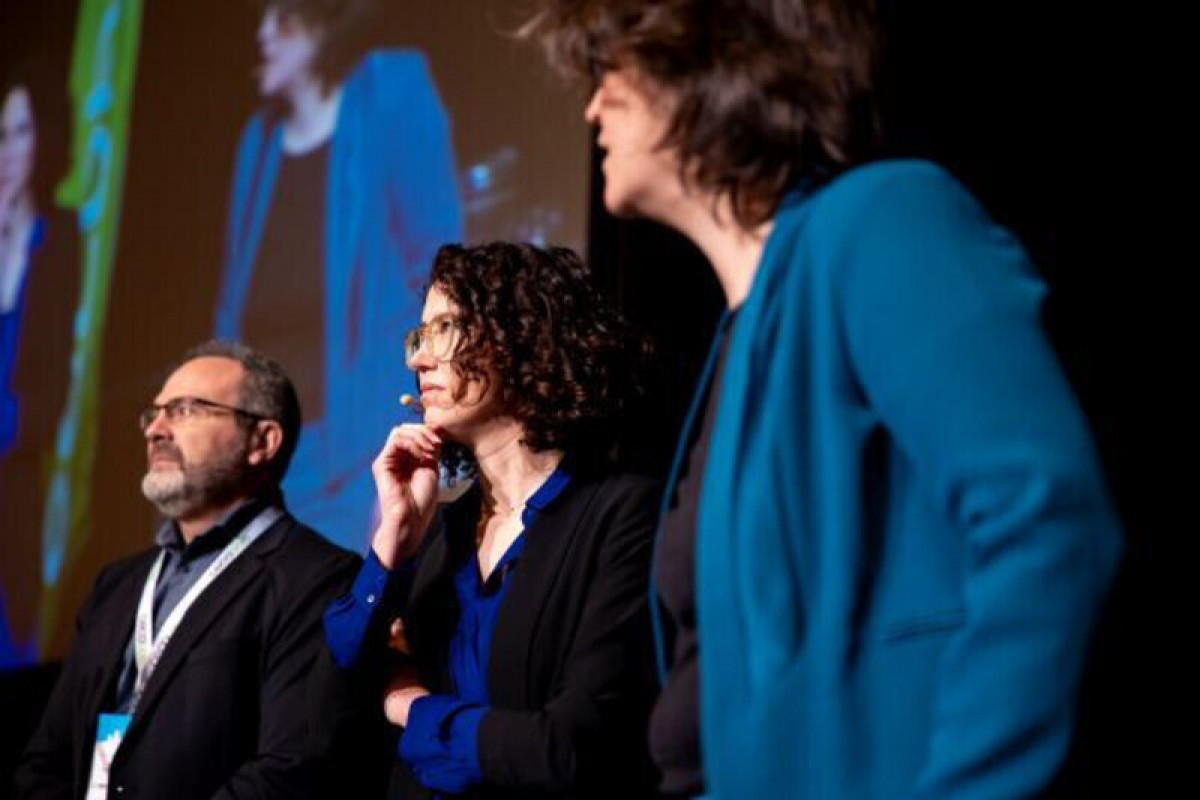19 Mar 2024

The first edition of the Forum sur la construction bas carbone et biosourcée (CBCB), organized by the Centre d’expertise sur la construction commerciale en bois (Cecobois), took place in February at the Québec City Convention Centre. Held as a parallel event to the 10th edition of the Cecobois Conferences, it was the first-ever large-scale event focused on reducing embodied carbon in buildings, and it highlighted the rapid development and extended use of non-residential multi-storey wood buildings in recent years. The event's many participants heard about the European approach to low-carbon construction and were able to benefit from the expertise of Canadian professionals working on these types of issues, including regulatory initiatives like the City of Toronto’s Green Standard and the Vancouver Building By-Law, both of which impose limits on embodied carbon in buildings.
When considering the environmental performance of buildings, embodied carbon, including the GHG emitted into the atmosphere when manufacturing construction materials, can no longer be ignored.
“Given the improvements to the energy efficiency of buildings, and given the context in Quebec, where hydro-electricity – clean energy – is predominant as an energy source, embodied carbon can account for up to 75% of a building’s carbon footprint over its life cycle,” said Louis Poliquin, Director of Cecobois.
Reducing the carbon footprint of buildings: real solutions
Quebec’s Minister of Natural Resources and Forests, Maïté Blanchette Vézina, was also present at the opening conference of the 10th edition of the Cecobois Conferences. Innovation and training are some of the solutions put forward in the Politique d'intégration du bois, to reduce GHG emissions by the construction sector, among other things.
The Minister took advantage of the opportunity to present the various forms of financial assistance available to support the implementation of new, continuous training aimed at addressing the changing needs of stakeholders in the non-residential and multi-family wood construction chain and promoting the environmental benefits of using wood through long-term storage of carbon in wood products used to construct buildings.
“The growing percentage of non-residential public and private wood-framed buildings of four storeys or less built in Quebec provides ample proof. It more than doubled between 2006 and 2022, from 15% to 36%,” said Louis Poliquin, Director of Cecobois. “We need to continue our training and awareness efforts to ensure that the percentage further increases in the future.”
The Quebec Government, in its Plan, pour économie verte 2030 (PVE), hopes to transform construction and renovation practices by promoting the use of energy-efficient, low-carbon footprint construction materials. Numerous preliminary analyses have highlighted the growing interest shown by professionals in reducing GHG emissions in the building sector across Quebec.
Creation of a database to document the average carbon footprint of buildings
In Quebec, Cecobois will lead by implementing an initiative to document the average carbon footprint of buildings. The main aim of the initiative will be to build an LCA database, produce a literature review, and develop a roadmap in collaboration with partner members from the Cecobois Network.
Another edition of the Forum CBCB in 2025
Following on from the success of its first edition, the Forum sur la construction bas carbone et biosourcée (CBCB) will be back in 2025 with a program designed to democratize the concept of embodied carbon, disseminate green building expertise and best practices, and encourage networking between suppliers and construction professionals.